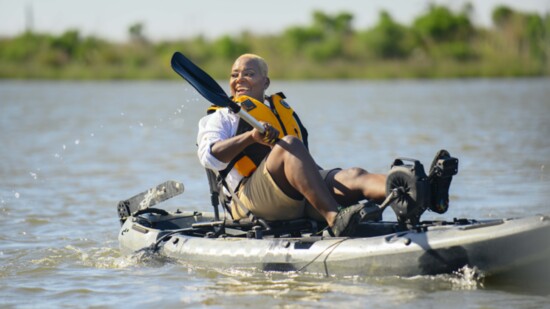You were born inside an unknowably large, infinitesimally complicated, and indescribably beautiful universe. You have just this one chance to make sense of it all. Best take it with all of your senses.
If that means wearing hearing aids, so be it. Others may notice them and form impressions of you, but those impressions are worth less than the paper this article is printed on. (To be sure, it is high-quality paper that was carefully selected for your reading pleasure, though it admittedly isn’t worth much in the grand scheme of things.)
And you know what? No one will remember you for wearing hearing aids. Take Mother Teresa and Nelson Mandela as examples. Both wore hearing aids, but that’s seldom the first thing people associate them with.
More specifically, both wore hearing aids manufactured by Starkey: the only American-owned global hearing aid manufacturer, which is headquartered in the city nearest and dearest to the Eden Prairie Lifestyle editorial team’s hearts.
“I’m a baby boomer,” said Dr. Dave Fabry, chief hearing health officer for Starkey. “As many boomers would attest, we tend to think of ourselves as 10 to 15 years younger than our chronological age (at least until we look in the mirror). Unfortunately, because of the age-related stigma traditionally associated with use of hearing aids, many from my generation have delayed or deferred the decision to purchase hearing aids. Worse yet, hearing loss affects nearly half of people aged 65 and older, which means a large number of my generational cohorts aren’t living their best lives.
“We’re doing our part to change that, and we’re doing it the best way we know how: through our relentless focus on providing the best benefits to the patient. Starkey is committed to making hearing aids so effective, so practical, and, dare I say it, so cool, that boomers will instantly appreciate just how indispensable they truly are.
“Nothing exemplifies the future of hearing aid technology better than its incorporation of artificial intelligence. When you wear one of Starkey’s state-of-the-art devices, it’s not unlike having your own J.A.R.V.I.S. – ‘Just a Rather Very Intelligent System,’ the AI built into Iron Man’s suit.
“We originally intended AI to help the patient correctly wear and maintain their hearing aids, but it progressed into so much more. Our latest models, including the recently released Edge AI hearing aids, are so advanced that they can translate over 70 different languages in real time. If someone speaks to you in Spanish, you will hear the translation in your hearing aids as soon as they’ve spoken it. And once you’ve spoken your response in English, the AI will instruct how to repeat it in en español.
“That’s only scratching the surface of AI’s benefits to the user. In addition to providing crystal clear sound quality and outstanding speech intelligibility in quiet and noisy listening environments, our intelligent hearing aids can stream calls and audio from a smart phone, count steps, and notify emergency services (and text up to three emergency contacts) if it senses the wearer has fallen while wearing their devices. That alone should provide enormous peace of mind to hearing aid users who want to remain in their own homes, and dread the thought of becoming the ‘80s TV commercial lady who had fallen and couldn’t get up.
“While a fall detection feature is great, it’s already too late if someone breaks their hip, like my own mother did. The fall didn’t kill her, although it did begin a downward spiral of health that accelerated her demise. That’s why Edge AI enables hearing aid wearers to self-monitor strength, gait, and balance to identify potential deficiencies relative to their age group, and then improve their performance through exercise or physical therapy with the goal of preventing falls before they occur.
“Hearing loss typically doesn’t occur in a vacuum. In addition to balance, it is often associated with elevated risks of cardiovascular disease and cognitive decline. Our hearing aids are designed to help users become more physically active by automatically tracking steps, exercise and musculoskeletal strength, as well as more socially engaged so they can avoid the isolation, depression and loneliness that often accompany untreated hearing loss. At Starkey, we believe hearing care is health care, and we are committed to helping hearing aid users from every generation hear and live better.
“The medical science behind hearing loss – and the technology that goes into its treatment – are both endlessly fascinating. They’re why I’ve cherished every minute of my career, which now spans over four decades. That’s nothing compared to William F. Austin, however, who founded Starkey in 1967 and still sees patients in The Center for Excellence at our headquarters in Eden Prairie, as well as around the world. Our focus on ‘servant leadership’ and patient-driven care began with Mr. Austin, and continues to this day under the guidance of Brandon Sawalich, CEO. I firmly believe we owe all our success to those core values.”
Do you believe you might need hearing aids? That’s not just okay. That’s cool! Talk to your doctor about whether you need a hearing screening, and visit starkey.com to discover why the world’s best hearing aids are made right here in town.
